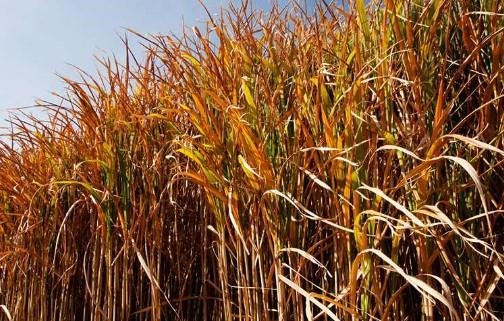By April Wendling

Miscanthus is a promising target crop for bioenergy production, but its great size also offers a wealth of aboveground surface area for microbes to thrive.
"Have you ever wondered about life on a leaf?" Great Lakes Bioenergy Research Center (GLBRC) researcher Ashley Shade asks a simple question, but it's one well worth investigation.
The aboveground part of plants where microbes reside, or the phyllosphere, represents the largest environmental surface area on the plant. Much of this area is grown as cultivated agriculture, and understanding the interactions between plants and the microorganisms that live on their surfaces may help us develop agricultural management practices that can increase crop productivity and resilience.
In their newly published study, Department of Energy Bioenergy Research Center collaborators at GLBRC and the Center for Advanced Bioenergy and Bioproducts Innovation (CABBI) peer into the complexities of life on a leaf.
Perennial plants like switchgrass and miscanthus are a crucial target for the sustainable development of biofuels. In addition to yielding large amounts of biomass that can be converted into biofuels and bioproducts, perennial crops offer a broad range of ecosystem services that support efforts to mitigate climate change, such as sequestering greenhouse gases and driving nutrient cycling in the soil.
Like all plants, perennials are home to a wide variety of microbes, and many of these microbes benefit their hosts. For example, some plant-associated microbes can increase the plant's productivity and offer some protection against environmental stressors like heat and drought. Because of this, management of the plant microbiome is one tool proposed to promote crop growth and resilience, which is particularly important in the face of global climate change. Along with selective breeding and data-informed field practices, microbiome management is expected to be instrumental in the sustainable production of biofuel feedstocks.
Different parts of a plant are home to different microbes. Many researchers in recent years have studied the plant-microbe interactions that take place in the rhizosphere—the belowground area around the roots—which play a key role in a plant's ability to uptake water and nutrients. However, the aboveground phyllosphere, which includes the surfaces of leaves, is also home to some very important microorganisms.
Click here to see more...